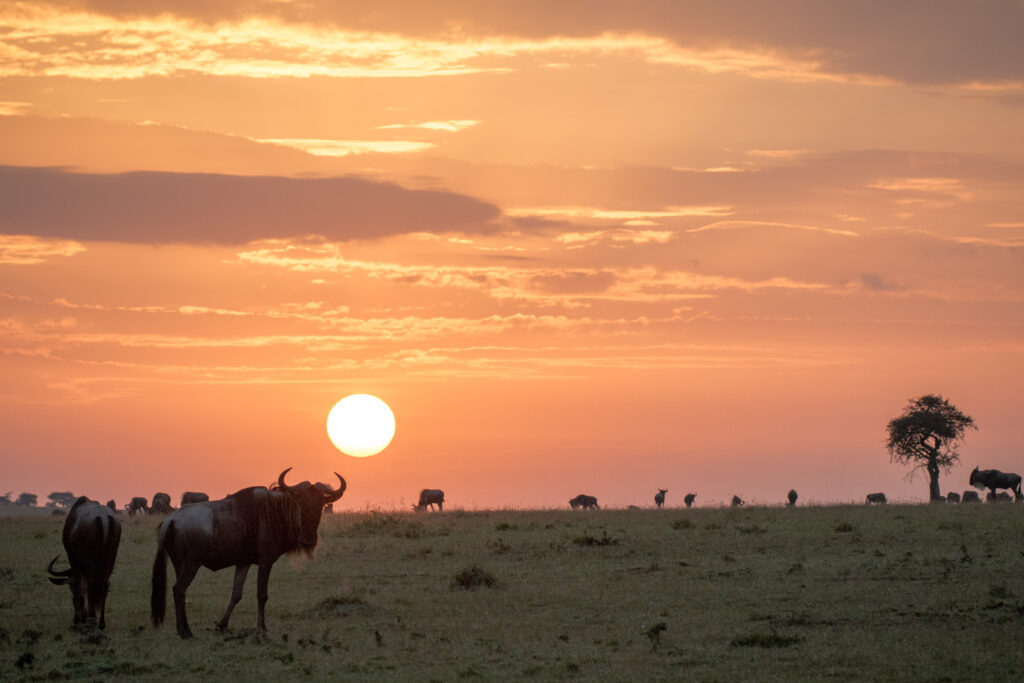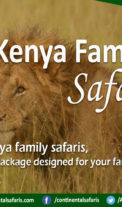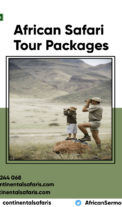The Maasai Mara is one of the most majestic wildlife sanctuaries in Africa and the most popular among visitors to Kenya. Together with the Serengeti National Park in Tanzania, they form a unique eco-system that is home to Africa's most famous wildlife and plants. It is in this region that travellers get the best safari experience.
Thanks to its vast expanses, the annual Great Wildebeest Migration, the multitude of wild animals and colourful birds, the opportunity to fly a balloon over the savannah and meet the people of the Masai tribe, the Kenya safari tour packages annually attracts thousands of travellers.
Masai Mara is located in the south-western part of Kenya, being home not only to wild animals, but also to the Masais, who have lived in the region for hundreds of years.
Maasai live in harmony with Masai Mara nature
The Masai tribe live side by side with wildlife, having managed to organize their life so as not to harm the environment and coexist with wild animals in perfect harmony. That is why they are allowed to build housing and raise cattle in the Masai Mara Nature Reserve.
Masai Mara - the famous safari destination
Masai mara safari tours attract not only tourists, but also writers, documentarians, researchers and journalists. Here you can not only come face to face with wildlife, but also make impressive photos, videos, and even be inspired to write a book.

Great Reserve of Africa
The Masai Mara is famous not only for the Big Five, but also for the Great Migration of the Wildebeest, which takes place here every year. Hundreds of animals cross the river to get to Mara from the expanse of the Serengeti. This mind-blowing sight makes the reserve special and one of the most visited in Africa. In Masai Mara safari tours, you can find everything from photo safaris to kid-friendly safaris.
The Beautiful Nature of Mara
The landscapes of the Maasai Mara consist mainly of a grassy savannah with groves of acacias in the southeast.
- The hills of Ngama are located in the east of Kiroka and the Sekanani Gate;
- The slope of Syria forms the western border;
- The Mara Triangle lies between the Mara River and the Snagh of Syria;
- The Central Plains occupy the area between the Mara River and the Ngama Hills.
Located at an altitude of 1500-2170 meters above sea level, the reserve occupies an area of 1,672 square kilometres of pastures, forests, acacia thickets, marshes and bushes. The arteries of the Maasai Mara are the Mara and Talek rivers along with tributaries.
The rainy season runs between April and May, as well as in November
Drought season - between July and October (during this period you can see a lot of herbivores)
The hottest months are December and January, and the coldest are June and July. Every year at the end of July and November there are heavy rains, at this time in Masai Mara grows fresh grass.
Home for Kenya's famous "Big Cats" The ecosystem is inhabited by more than 95 species of animals, including groups of elephants and buffaloes, hippopotamuses and giraffes, zebras and gazelles, crocodiles, rhinos and monkeys. But most travellers come here to see Africa's most famous predators. We are talking about so-called "big cats" - lions, cheetahs and leopards, as well as hyenas and jackals. With Kenya safari tour packages, enjoy the opportunity to see the animals at a close distance and even to notice them during hunting for herbivores.









